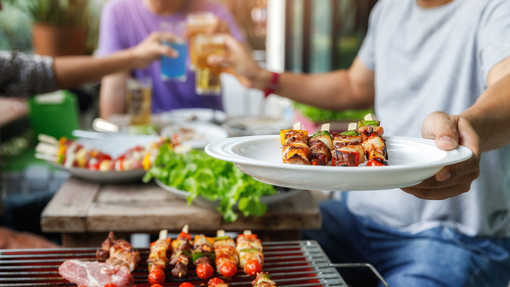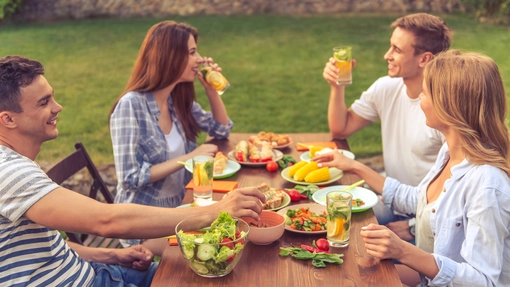
How to snack sustainably
Whether it’s raiding the fridge for leftovers or freezing snacks you won’t have time to eat yet, here’s everything you need to know about snacking the sustainable way.
How to avoid over-buying
It’s all too easy to buy too much food – especially when you’re wandering around the shop hungry and on the lookout for snacks! If you tend to have eyes bigger than your stomach, you can reduce your chances of over-buying with a few simple tricks.
The first is easy: write a shopping list. To help you do this, use our Food Portion Calculator to take the guesswork out of figuring out how much you’ll need to buy per person of a particular ingredient.
When you get to the supermarket or you’re placing an order for an online delivery, stick rigidly to your list and don’t be tempted by all those special offers – buy-one-get-one-free, two-for-one and similar deals are a recipe for ending up with more food than you can eat!
Store snacks in the right place
Give your snacks the best possible lifespan by storing them in the right place and making sure your fridge is at the correct temperature – somewhere between 0 and 5°C – as this could give your food an extra two or three days of freshness!
If your snack of choice is fruit, most of this is best stored in the fridge – the only exception being bananas, which would go black. You can take it out of the fridge to bring it up to room temperature around 20 minutes before you want to eat it if you’d rather not have it chilled.
If you enjoy snacking on toast or crumpets, remember that it’s best to store bread in a cool, dry and dark place, such as a bread bin. The same goes for biscuits, which, once opened, it’s a good idea to seal in an airtight container to stop the first few going soft.
Your freezer is your friend when it comes to storing any snacks you can’t eat in time, and you’d be amazed what you can freeze. In the unlikely event that you can’t get through all that chocolate, this will quite happily go in the freezer in an airtight container for another day. So will hard cheese, cakes, flapjacks… you name it! To defrost it safely, either let it thaw slowly in the fridge or pop it in the microwave on the defrost setting. Check out our food pages for advice on specific ingredients.
Raid the fridge and transform your leftovers
From last night’s leftovers to that bag of spuds that needs using up in the veg drawer, there’s endless potential when it comes to conjuring up delicious bites to eat from whatever you have in your cupboards and fridge. Time to get creative in the name of snacking!
Slice cooked spuds from yesterday’s dinner and fry them in olive oil – grate over any cheese you have that needs using up for extra yum-factor. Use up cooked veg in these tasty quesadillas. Cut raw spuds into chunks and bake them into loaded potato wedges that’ll also use up any sour cream, bacon or cheese you have in the fridge.
Chop up raw carrot, pepper or cucumber and dip into some hummus (try our beetroot hummus if you’ve time to spare). Turn that risotto you made last evening into tasty arancini balls. You could even make crisps from potato peel, mini pizzas from bread ends or nachos from vegetables!
When only a sugar rush will do, use up those over-ripe bananas and leftover chocolate to make our ultra-tasty frozen banana and chocolate lollies. You’ll never look at a browning banana the same way again!
Look up your ingredients on our recipe pages for even more inspiration. You’ll find lots more top tips on getting into great food habits in our weekly food routine guide, and if you have any favourite food-waste busting snacks, do share them with us on our social media channels!




